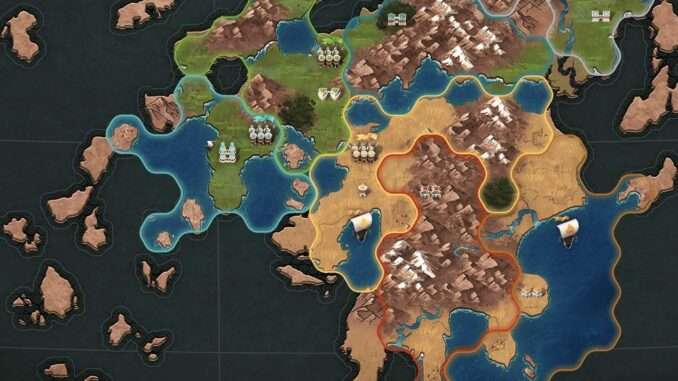
Power
Note: Credit goes to Taran
Power is the way the game handles war. Empires can use their power to support claiming tiles and conquering the tiles of enemy empires.

An empires power is evaluated for each tile separately.
Let’s look at the power tab. It doesn’t open a menu, but activates a selection of overlays.
- See your power in each tile as a heatmap (or pie chart if another empire also has power there)
- Hover over a tile to see an explanation of each empire’s power level in that tile
- Hover over another empire’s banner on the left to see their power across the map
- Hover over the Knowledge tab to view power contributions from your techs
- Hover over the Wealth tab to view power contributions from your military units
- Hover over the Food tab to view power contributions from your cities
- Hover over the Power tab to view your total power in each tile in numbers
In this guide we distinguish between two types of power, passive and active.
Passive Power
This type of power is independent of your power resource. This depends on terrain, cities and technology. Unless a friendly unit is adjacent, this only affects friendly and neutral tiles. You will thus always have 0 power in enemy territory if you have no adjacent units.
Terrain
There are 9 types of terrain.
Island, River, Grassland, Plain, Mountain, Forest, Desert, Sea, City.
Initially you have no inherent power on any of these tiles. Power technologies will change that, improving your power in every tile with that terrain type.
If you seek to defend or attack an area, unlock power technologies for that type of terrain.
Defensive Bonus
Defensive bonuses only ever apply in friendly territory.
Hills get +2 Power in defensive bonus.
Islands and Forests get +1 Power in defensive bonus.
The owner of the tile is thus given free power, making it easier to defend.
Cities
Cities exert their influence on nearby tiles in proportion to their size. This power applies in both friendly and neutral territory.
A city of size 4 has the following effect:
- The city tile gets +4 Power.
- In adjacent tiles you get +3 Power.
- In tiles 2 away you get +2 Power.
- In tiles 3 away you get +1 Power.
And so on.
Note that this means that city size is most beneficial at the front line, since it helps defend your territory. This is of course more dangerous, since you risk loosing your investment.
Active Power
Active power is projected by military units, and is how you direct attacks against the enemy. It can also be necessary to defend your border if your passive power is insufficient.
Armies/Navies
Military units project your empire power onto their own, and adjacent tiles. Moving them costs food.
Note that both types of units can stay in cities.
Threaten -> Attack
Conquering spaces is a two turn process.
At the end of each turn, the power distribution in each border tile is evaluated. If the owner’s power is less than another empire’s and an enemy unit from that empire is adjacent, on of two things will happen,
- If the tile is “normal”, it will become “threatened”. An overlay corresponding to the aggressor’s color will show.
- If the tile is already being “threatened”, it will change ownership to the hostile empire with most power in that tile and an adjacent unit.
Note that the conqueror does not have to be the one to threaten the tile.
Killing Units
Although units don’t fight directly, it is still possible to lose and kill units.
After tiles have been transferred, any unit not on or adjacent to a connected friendly tile is destroyed.





Be the first to comment